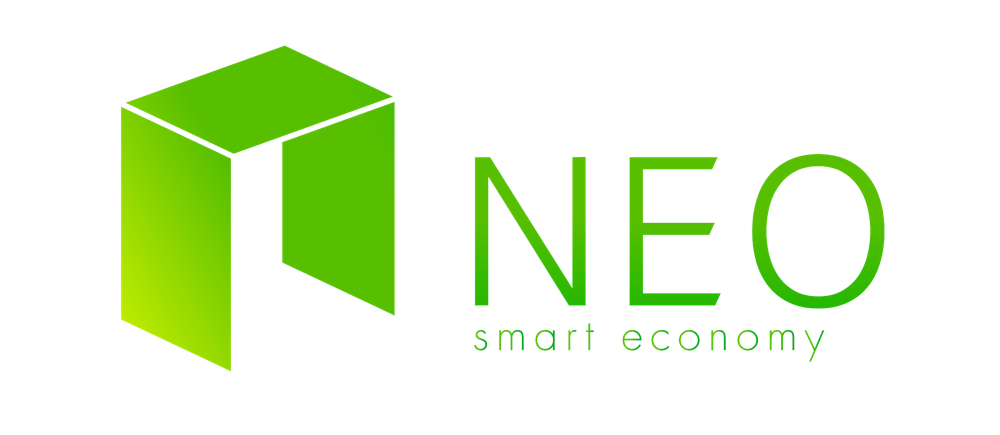WHICH IS BETTER? NEO vs EOS
![]()
A Complete Comparison with All Pros/Cons of NEO vs EOS

NEO vs EOS? Which of these cryptocurrencies will outperform this year? How are they different? How do they compare? Which one should you buy? These are some of the questions we have been asked.
The debate between EOS vs. NEO is ruthless one as these two cryptocurrencies are the most compared after Bitcoin and Ethereum. So, you should first read this guide if you’re thinking about investing in them or just want to compare NEO with EOS.
There is little information about NEO as most experts fail to give an unbiased review. For this reason, we have researched NEO and EOS in detail. In this complete guide, you will learn all about the cryptocurrencies and get our unbiased opinion.
We will present all the pros and cons. After reading this guide you will understand the fundamental similarities and differences between both networks. This will let you make an educated decision on which cryptocurrency is best. NEO vs EOS?
Let’s check out these two coins and see which one has the potential to outperform Ethereum. First, we will start with our side-by-side comparison table. Let the battle begin!
CHAPTER 1
Side-by-Side Comparison
CHAPTER 2
What is EOS? (Pros, Cons & Investing Ideas)
CHAPTER 3
What is NEO? (Pros, Cons & Investing Ideas)
CHAPTER 4
EOS vs NEO - Similarities
CHAPTER 5
NEO vs EOS - Differences
CHAPTER 6
EOS vs NEO - Which Is Better?
WINNER
Buy Cryptocurrency Here
FAQ
Frequently Asked Questions
Top 3 Crypto Exchanges - July 2024
| # | Most PopularExchange | Rating | Services | Deposit / Withdraw | Fees / Spread | Why Open Account? | |||||
|---|---|---|---|---|---|---|---|---|---|---|---|
 |  | 98 | All-in-One | Low$0 / $5 | Low$0 / ~0.75% |
| |||||
| Payment Methods: | Cryptocurrencies: | Payment Methods: | |||||||||
 |  | 80 Read Review | Exchange | Low$0 / $2 | Mid1.49-3.99% + ~0.50% |
| |||||
 |  | 80 | Exchange | Low | Mid |
| |||||
| 4 |  | 78 | Exchange | Mid | Low |
| |||||
| 5 |  | 75 | Exchange | Low | Mid |
| |||||
| 6 |  | 75 | Exchange | Low | Mid |
| |||||
| 7 |  | 70 | Exchange | Low | Mid |
| |||||
| 8 |  | 70 | Exchange | Mid | Low |
| |||||
| 9 |  | 66 Read Review | Exchange | Mid | Low |
| |||||
| 10 |  | 65 | Seller | High$0-25 / 0.10-0.90% | High 3.90-8.99% + 2.00% |
| |||||
| 11 |  | 62 | Exchange | Mid | Mid |
| |||||
| 12 |  | 57 | Exchange | High | High |
| |||||
| 13 |  | 57 | CFD | Low | Mid |
| |||||
| 14 |  | 55 | Exchange | BTCDeposits only crypto | Low |
| |||||
Only Crypto: No Fiat Deposits (USD/EUR) | |||||||||||
Welcome to CryptoRunner! I’m David Andersson, co-founder of this site.
We understand that cryptocurrencies can be confusing and frustrating. That’s why we are here to help you.
Keep reading!

CHAPTER 1
Side-by-Side Comparison

The summary table below shows some important figures to compare. Which numbers are most important? That depends on who you ask. You should continue reading the guide to learn about all the differences. If you want to choose the best cryptocurrency for you, it’s not enough to compare some numbers. However, let’s start by comparing NEO with EOS →
NEO vs EOS
| NEO | EOS | |
|---|---|---|
| Launch Date | February 2014 | January 2018 |
| The Founders | Da HongFei and Erik Zhang | Daniel Larimer and Brendan Blumer |
| Supply (number of tokens) | 100 million | 1 billion (increase every year) |
| Block Confirmation Time | 15 seconds | Instantly (≈ 0.25 seconds) |
| Hashing Algorithm | SHA-256 and RIPEMD-160 | SHA-256 |
| Programming Language | C# and Java | C++ |
| Smallest Unit | 1.0 NEO / 0.00000001 GAS | 0.0001 EOS |
| Normal Description | Chinese-market Ethereum | Decentralized applications on WebAssembly |
CHAPTER 2
What is EOS? (Pros, Cons & Investing Ideas)

EOS is what we commonly refer to as a decentralized, blockchain-based technology that was designed to host and support decentralized applications (dApps) on a commercial scale. It is an open source software that was built on the Ethereum blockchain by the Block.one Company registered in the Cayman Islands.
The goal? Like Ethereum (ETH), EOS allows developers to build dApps through smart contracts and most importantly, to proffer a solution to the scalability problem currently plaguing most cryptocurrencies, like Bitcoin. Moreover, EOS, popularly touted as “Ethereum Killer”, uses the delegated Proof-of-Stake (DPoS) consensus algorithm to eliminate transaction fees and it’s expected by its developers to process millions of transactions every second, unlike Ethereum that processes around 15 transactions per second.
The Ethereum Killer!
This, indeed, has become the selling point of this smart contract platform that was launched by Daniel Larimer. He is a blockchain engineer and developer who and also the founder of Bitshares and the co-founder of Steem.
Moving forward, when it comes to EOS vs NEO, special attention needs to be given to EOS and EOS.IO. You should understand the difference between the network and the currency.
Difference Between EOS.IO and EOS
The EOS.IO and the EOS tokens are the two key elements in the EOS ecosystem and a lot of people have used them interchangeably. However, both are distinctly different from each other. How so? EOS is to EOS.IO what Ether is to Ethereum. Got it now? Okay, let’s break it down.
EOS.IO is open software, closely akin to the operating system of a computer. It incorporates blockchain architecture that is designed to enable vertical and horizontal scaling of dApps. Meanwhile, the native EOS token is the cryptocurrency that powers the EOS.IO blockchain protocol. While it has gone main net since June 1, 2018, EOS is the first blockchain network to be built on the EOS.IO software.
It is also worthy of note that EOS which started out as an ERC-20 token, raised over $4 billion in a year-long Initial Coin Offering (ICO), thus adding to its popularity. If you want to learn more about EOS.IO we recommend this video.
What is Delegated Proof of Stake (DPoS)?
Delegated Proof of Stake (DPoS) is a consensus algorithm that leverages the power of stakeholder approval to vote for a pool of delegates, in addition to the algorithm, who is then responsible for validating transactions in few seconds and adding them to the shared ledger of a blockchain.
Invented by Daniel Larimer, Delegated Proof of Stake is advantageous when compared with the popular Proof-of-Work (PoW) consensus algorithm, because it is cheaper, faster, saves energy costs and also promotes decentralization.
Let’s now go a step further in this NEO vs EOS debate and highlight the strengths and weaknesses of EOS →

EOS Pros & Cons
The following are the strengths of the EOS platform that makes it worth investing in. Check out the 5 key advantages of the cryptocurrency:
EOS Advantages
- Speedy Transactions – Using parallel processing technology, EOS performs speedy and validated transactions, thus beating the Bitcoin and Ethereum networks. Its developers have theoretically proven that it can even handle millions of transactions each and every second.
- Less Risk of Hard Forks – Instead of having to hard fork, the EOS network upgrades each time there is a software upgrade. Also, if a dApp is buggy, it can be frozen by block producers until the issue is fixed.
- ICO Friendly – EOS is designed in such a way that ICOs can be hosted on the EOS network. This means that ERC20 tokens can be created on top of the blockchain.
- Governance – EOS is the first to have a governance structure or a constitution that every EOS token holder agrees to. While they are attached to every block mined, these set of rules can be modified if the need be, by any eligible stakeholder via voting processes.
- Self-sufficient Reward – The EOS is designed to be self-sufficient and evolutionary. The current inflation rate every year is 5%, which will, in turn, be used in paying miners for validating transactions and for further developing the network.
EOS Disadvantages
With all of those aforementioned features and advantages, the EOS platform is not without disadvantages. The cons include the following:
- Centralization Concerns – Since EOS was designed to rely on only 21 block producers to confirm all transactions, some have argued that the network is more centralized than Ethereum and some other cryptocurrencies. In addition, while EOS relies on voting by stakeholders, low voter turnout could lead to further centralization. What is more, some are concerned about the fact that regular users are unable to audit the network unless they plan on doing so by personally running a full node.
- Many Competitors – When it comes to competition, EOS has a lot of competitors besides Ethereum. Networks such as NEO, RChain, Rootstock, and RSK are contending with EOS. While there is more room for more than one successful platform, EOS must stay ahead if it wishes by continuously stepping up its game.
Shifting gears, is EOS worth investing in this year? This question is probably why you are reading this NEO vs EOS comparison guide. What do we know →

Should you invest in EOS?
EOS was among other digital coins that were badly affected in 2018 when the bear market kicked in with vengeance. Nevertheless, investing in EOS now has good opportunities to pay off. It’s one of the leading cryptocurrencies on the market.
Very recently, EOS has successfully left Ethereum behind to take charge of the dApp space. Breaking down the top 30 dApps, the EOS network dominates 22 of them. What is more, EOS has retained its first position in the latest Chinese government ranking of public blockchain projects.
Let’s continue comparing EOS vs NEO. Below we will go through all similarities and differences. First, we need to learn the basics of NEO →
CHAPTER 3
What is NEO? (Pros, Cons & Investing Ideas)

NEO, which means new in the Greek language, is an open source, a community-driven platform that utilizes blockchain technology for decentralized applications through smart contracts. NEO happens to be the first public blockchain project initiated in China.
NEO was formerly known as “Antshares” when it was launched in China in 2014 by Da Hongfei, and Core Developer Erik Zhang. In June 2015, NEO was open-sourced on GitHub and its main network (MainNet) of the blockchain platform was later launched in October 2016. Thereafter, it was rebranded to NEO in June 2017 in its vision to realize a “smart economy”.
The Ethereum of China
While it is dubbed as the “Ethereum of China“, NEO uses the Proof of-Stake (PoS) consensus algorithm called Delegated Byzantine Fault Tolerance (dBFT). This current consensus mechanism was recently updated to DBFT 2.0 to make the NEO network much more stable.
Watch the following video as the founder of NEO explains more:
In the NEO vs EOS battle, let’s consider the consensus mechanism NEO uses.
What’s NEO’s dBFT Algorithm?
For many cryptocurrency supporters, the dBFT algorithm is used in achieving consensus is hard to understand as it is complicated. While it remains confusing, it is used by Binance, one of the largest cryptocurrency exchanges. This is because; dBFT can effectively combat unreliable participants on the blockchain network.
Developed by the NEO team, the dBFT consensus algorithm is based on the PBFT (Practical Byzantine Fault Tolerance) algorithm and is used to overcome one of the biggest challenges called “Byzantine General’s Problem”. Put simply, it is used in determining blocks that are valid and then allowing their transactions to be processed faster.
The system is comprised of trusted nodes that commit to a block once they interact with it, elected delegates who add new blocks, and a randomly chosen speaker who proposes the new blocks. Gain more insight here.
Having briefly examined the complex aspects of NEO vs EOS, let’s now proceed to consider the advantages and disadvantages of NEO and see how they compare.

NEO Pros and Cons
The NEO blockchain is characterized by a number of positive qualities. The following are 4 main key advantages of cryptocurrency:
NEO Advantages
- NEO Consensus Algorithm – Unlike Ethereum’ s POW that is very energy intensive and expensive, NEO uses the unique and newly developed dBFT consensus mechanism that is considered to be far more energy efficient than most of the older protocols. This feature seems to have given the NEO blockchain an edge.
- Transaction Speed – The developers of the NEO network say that it is capable of processing at least 10,000 transactions per second. This high speed has boosted the adoption of the cryptocurrency.
- China-Backed Cryptocurrency – Being China’s biggest cryptocurrency, NEO has strong backing from the Chinese government and support from institutional investors that have ensured the longevity of the platform.
- Ease of Developers – Developers can write smart contracts that can run in many common programming languages on NEO, like C+ and Java and Python. Thus, NEO platform is easy to use for blockchain developers.
NEO Disadvantages
No good thing comes without a price, hence there must be a few obstacles to the perfection of NEO’s platform. Let’s take a look at some:
- Lack of Popularity in The Western World – While NEO is actually more popular in Asia because of its Chinese root, it is relatively unknown in the English-speaking western world.
- Big Competition – NEO is faced with big competitors like Ethereum and EOS that that already have loyal followers in the crypto community with an established reputation. Since new competitors are coming up every now and then, NEO must fight to win.
- Legislative Unknowns – While it is supported by a very strict governmental system of China, NEO’s technological decisions may be politically influenced.
- Centralization – NEO is very much centralized and about half of all cryptocurrencies are in control of the developers and it is not clear if this will change in the near future.
Having gone through EOS vs NEO histories, is the latter worth investing in this year?

Should you invest in NEO?
NEO was among other cryptocurrencies that performed poorly in 2018 as its price tanked along in September and October 2018. However, because of their strong position in China, they are worthy of being considered as an investment.
You should not underestimate a first mover advantage! While it is supported by the Chinese government, it is now being eyed by institutional investors. The coin is gaining popularity because of its speedy transactions. When the crypto market starts moving, we wouldn’t be surprised if NEO is the top performer.
Having that said, you must make your own decision on EOS vs NEO. However, you’re lucky because we have listed all the similarities and differences below. Let’s check them out.
CHAPTER 4
EOS vs NEO - Similarities

There are so many similarities between EOS vs NEO as both platforms try to kill Ethereum in four areas; namely, vision, scalability, economy, decentralization and lastly, adoption. Now let’s expatiate on them one after the other.
Vision
The vision of NEO is to create a friendly blockchain for the transition of what they call the Smart Economy. NEO seeks to use high-performance computing to advance consensus algorithms and to use the NEO blockchain network as a problem-solving platform. Their goal is to have the ability to operate commercial applications on a large scale. What is more, NEO operates on the principle that transactions should be free of charge for users. These and more were discussed in the 2019 DevCon event.
What about EOS? It is pretty much the same. Their vision is to build a complete decentralized operating system that is capable of supporting thousands of industrial-scale dApps. EOS aims to securely and smoothly handle high-speed transactions per second. Like NEO, they operate under the philosophy that transactions should be without cost.
Scalability
When it comes to speed and scalability of NEO vs EOS, both have always been among the fastest when compared to other projects. While EOS scalability is theoretically estimated between twenty thousand to one million transactions per second, NEO’s blockchain currently supports one thousand tps and has a theoretical throughput of ten thousand tps with plans that the platform will be able to support 100.000 tps by 2020 with the Trinity Network protocol.
Economy
It is worthy of note that sending transactions on both networks comes with no cost for regular users, as businesses foot the bill. NEO and EOS businesses face an upstart cost to key into the ecosystem. While this cost is variable on EOS, depending on the decentralized application, NEO is fixed and expensive. EOS vs NEO, both share some similarities when it comes to consensus protocols.
While NEO uses dBFT, EOS utilizes the DPOS, the consensus mechanism invented by Dan Larimer. He later opted for an advanced version of EOS consensus protocol, the DPoS+BFT (Delegated Proof of Stake + Byzantine Fault Tolerance). Both systems are designed to combat up to a 66% attack.
Dan Larimer explains the dBFT consensus mechanism in the video below.
Adoption
Currently, the race for massive adoption is on between these two platforms. NEO vs EOS, both are quite popular platforms with large followers in the crypto community. While China tightens its grip on cryptocurrencies, NEO has been favorably looked upon by the Chinese government, thus contributing to its growth and adoption of the NEO ecosystem.
What is more, EOS blockchain is currently the most used in the world as per blocktivity. It is the first blockchain with the most daily active users as 7800000 operations were performed in just 24 hours. Also, EOS secures the first position on China’s CCID Blockchain Ranking.
That said, let us now shift gears and take a look at how they are different from each other.
Undoubtedly, NEO vs EOS are both different from each other. In what ways? Read on!
CHAPTER 5
NEO vs EOS - Differences

While EOS vs NEO are both competing to dethrone Ethereum, there are differences that are peculiar to each of these platforms.
Transaction Speed
- NEO claims to handle 10, 000 transactions per second, but the estimated are below 400 tps.
- EOS claims they can handle 3,996 transactions per second, but the estimated 50 tps.
Backers
- NEO has the backing of the Chinese government and various tech giants like WINGS, Alibaba, and Microsoft.
- EOS is an American-led project, it is not fully supported by the US government. Still, PayPal co-founder, Peter Thiel supported Block.one, the developer of EOS which raised $4 billion during its ICO.
Direction
- NEO is going in the direction of creating a “Smart Economy” by digitizing traditional real-world assets via digital identity, smart contracts as well as dApps.
- EOS is headed towards building a blockchain dapp platform that can be highly scalable, flexible, and usable.
After considering their pros and cons, the similarities and the differences between NEO vs EOS, which is better?
CHAPTER 6
EOS vs NEO - Which Is Better?

The coming year will be competitive between EOS vs NEO. It is hard to say whether one project is better than the other because both of them are very similar. The NEO and EOS platforms are capable of processing transactions speedily and can be used in creating dApps as well as smart contracts.
While the EOS project is mainly focused on the digital world of dApps, NEO, on the other hand, seems to be more focused on digitizing the financial world with powerful digital identities and putting them on the blockchain. However, none of them is yet at their full potential; the future looks bright for them.
This EOS vs NEO comparison guide should have given you enough information for your own opinion.
Which Should You Buy?
While the decision is yours to make, we think both coins are good for investment so you can buy both to build a diversified long-term portfolio. They can complement each other well because they are popular in different regions.
But no matter what crypto you hold in high regard after studying this comparison guide, it’s important that you review your choices regularly and to look at their fundamentals.
Which one will you buy? Let us know in the comments! Below you will find the best exchange to buy EOS and NEO →
 | Buy NEO / EOS Now!
|
Risk Disclaimer: Don’t invest unless you’re prepared to lose all the money you invest. This is a high-risk investment and you should not expect to be protected if something goes wrong.
Frequently Asked Questions
Is your question not answered here? Let us know!
NEO originally was called Antshares. The term “neo” means new or modified. You can think of NEO as a modified type of Antshares.
EOS stands for “Ethereum Operating System”, but that is not official.
Do you want to buy NEO instantly with your debit/credit card? In that case, use the cryptocurrency exchange we recommend above. It’s the fastest and easiest way to buy NEO →
Do you want to buy EOS instantly with your debit/credit card? In that case, use the cryptocurrency exchange we recommend above. It’s the fastest and easiest way to buy EOS →

















FORUM
Join The Discussion